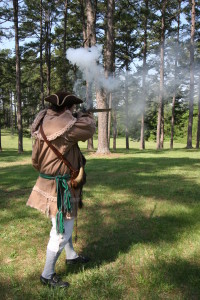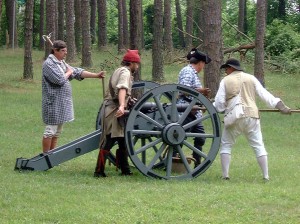 The colonial period for the Alamance County area was marked, mostly, by farming and trade. Family farms appeared as the rural population of North Carolina moved west, and much of the area was devoted to agriculture. In the 1740’s, Europeans started to heavily settle the area as various settlers from the north started to move south, taking the “lower road” of the Piedmont rather than the “high road” of the Appalachian Mountains.
The colonial period for the Alamance County area was marked, mostly, by farming and trade. Family farms appeared as the rural population of North Carolina moved west, and much of the area was devoted to agriculture. In the 1740’s, Europeans started to heavily settle the area as various settlers from the north started to move south, taking the “lower road” of the Piedmont rather than the “high road” of the Appalachian Mountains.
In general, the settlement of the Alamance County area was by religious affiliation. Quakers tended to settle around the Cane Creek area, near what is now called Snow Camp. The German Reformed and Lutheran settlers settled near Great Alamance and Stinking Quarter Creek, near the present day Village of Alamance and unincorporated community of Bellmont. Finally, the Presbyterian settlers established themselves in Hawfields, near modern-day Mebane. As closely as these groups were, in the early days, there was little interaction between the three communities.
In the 1750’s, war broke out between France and Great Britain, and North Carolina sent its milita. After the war, Great Britain found itself in great debt, and the colonists who served in the milita saw their efforts unrewarded. To make matters worse, taxes were raised to pay for the war. In North Carolina, those taxes were collected by Sheriffs who often collected taxes unfairly by adding charges and destroying evidence of payment.
 In the 1760’s, poor farmers in North Carolina organized into a group called “The Regulators” and conducted minor raids and skirmishes in the frontier. In 1771, the colonial militia was called out against them, and on May 14, 1771, Governor Tryon and his militia camped out on the banks of Great Alamance Creek, named so for a local Native American word describing the blue-colored mud found in the creek. Leaving a token guard of 75 troops at the camp, his main force of 2,000 troops marched 10 miles until they reached the site where the Regulators had gathered. 6,000 men – mostly farmers who came unarmed, gathered in hopes of creating enough fear by their superior numbers to force the governor to retreat.Battle of Alamance Soldiers
In the 1760’s, poor farmers in North Carolina organized into a group called “The Regulators” and conducted minor raids and skirmishes in the frontier. In 1771, the colonial militia was called out against them, and on May 14, 1771, Governor Tryon and his militia camped out on the banks of Great Alamance Creek, named so for a local Native American word describing the blue-colored mud found in the creek. Leaving a token guard of 75 troops at the camp, his main force of 2,000 troops marched 10 miles until they reached the site where the Regulators had gathered. 6,000 men – mostly farmers who came unarmed, gathered in hopes of creating enough fear by their superior numbers to force the governor to retreat.Battle of Alamance Soldiers
Governor Tryon did not retreat, and on May 16, the Battle of Alamance was fought. There is some confusion as to how the battle began. A common story is that Governor Tryon felt insulted by a representative of the regulators – Robert Thompson – who came to Tryon’s camp, listed the Regulators’ demands, and then turned his back on the Governor, who promptly grabbed a musket and shot Thompson in the back. When Tryon realized what he did, he ordered a white flag flown, but the flag was shot out of the flagbearer’s hands.
The Regulators were disorganized and mostly unarmed. The militia was organized, trained, and well-armed. Both sides fought fiercely. Tryon himself – who tried again to fly a flag of truce – was nearly shot by a musket ball that hit his hat. When it was all over, nine members of the milita were killed and sixty-one were wounded. Between ten and fifteen members of the Regulators were killed and between 100 and 150 were wounded. Tryon took 15 prisoners, six of whom were hanged at the Hillsborough Courthouse and one, James Few – brother of American Founding Father William Few, who was hanged the day after the battle at Tryon’s camp.
